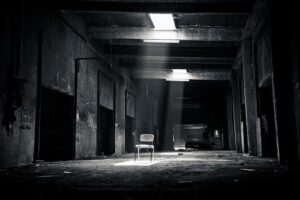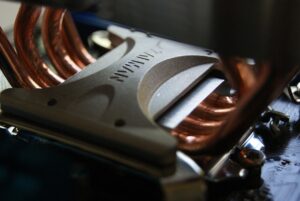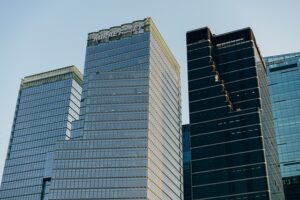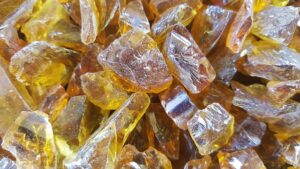Corrosive environments damage standard industrial equipment, especially destratification fans. Corrosion-resistant industrial destratification fans offer energy cost savings and improved worker comfort through efficient thermal stratification control in large factories and warehouses. Their robust design tackles humidity, chemical fumes, and abrasive particles for long-term durability, making them ideal for harsh conditions like manufacturing plants and construction sites.
In industries facing corrosive environments, the reliability of equipment is paramount. Traditional fans often succumb to harsh conditions, leading to downtime and increased maintenance costs. This article explores the critical role of corrosion-resistant industrial destratification fans as a solution. We’ll delve into the challenges of corrosive settings, examining how these specialized fans maintain efficiency and longevity. By understanding their key features and diverse applications, you’ll discover why they’re an indispensable asset for industrial operations.
- Understanding Corrosive Environments and Their Challenges
- The Role of Destratification Fans in Industry
- Key Features of Corrosion-Resistant Industrial Fans
- Applications and Benefits: Harsh Conditions Met
Understanding Corrosive Environments and Their Challenges

Corrosive environments present unique challenges for industrial equipment, particularly when it comes to industrial destratification fans. These harsh conditions can vary widely, from damp and humid manufacturing plants to dusty warehouse applications, each with its own set of corrosive factors at play. Understanding these elements is crucial in selecting the right fan for heavy duty construction and ensuring longevity in high ceiling spaces.
Factors like moisture, chemical fumes, abrasive particles, and varying temperatures can contribute to rapid deterioration of standard equipment. Traditional fans may struggle to perform effectively or even last long-term in such environments. This is where corrosion-resistant industrial destratification fans designed for durability and performance come into play, offering energy cost reduction and worker comfort improvement through efficient thermal stratification control in these demanding factory cooling scenarios.
The Role of Destratification Fans in Industry

Industrial destratification fans play a vital role in maintaining optimal conditions within various industrial facilities and manufacturing plants. These specialized fans are designed to tackle a unique challenge: thermal stratification control. In large space air circulation scenarios, such as factories with high ceilings or warehouse applications, warm air tends to rise to the top, creating layers of hot and cold air. This phenomenon can significantly impact worker comfort and efficiency. By strategically placing destratification fans, manufacturers can disrupt this stratification, ensuring even air distribution throughout the entire workspace.
Not only do these industrial destratification fans improve worker comfort and productivity, but they also offer significant energy cost reduction opportunities. Efficient air mixing can reduce the reliance on additional heating or cooling systems, making them an excellent solution for heavy-duty construction sites and other harsh conditions. The high-quality, corrosion-resistant design ensures longevity in challenging environments, contributing to overall operational stability and reduced maintenance costs.
Key Features of Corrosion-Resistant Industrial Fans

Corrosion-resistant industrial destratification fans are designed to withstand the toughest environments, making them an ideal choice for various industries. These fans feature robust construction with high-grade materials, ensuring longevity even in harsh conditions. The key lies in their ability to combat corrosion, a common issue in industrial facilities, manufacturing plants, and warehouse applications, where humidity and chemical exposure are prevalent.
With heavy-duty designs, these fans can efficiently manage large space air circulation, effectively reducing thermal stratification control issues. By circulating air evenly across high ceiling spaces in factories, they enhance worker comfort and improve energy efficiency, thereby leading to significant energy cost reduction. This is particularly beneficial for factory cooling requirements, ensuring optimal conditions for operations without compromising on durability or performance.
Applications and Benefits: Harsh Conditions Met

Industrial destratification fans are designed to tackle some of the toughest challenges faced by manufacturers and warehouse operators. In industrial facilities and manufacturing plants, where high ceilings and large spaces can lead to problematic thermal stratification, these fans offer a powerful solution. By efficiently circulating air, they disrupt hot and cold air pockets, ensuring optimal factory cooling and creating a more comfortable working environment for employees.
This technology provides significant benefits beyond improved worker comfort. Effective destratification can lead to substantial energy cost reduction by minimizing the need for additional cooling systems. Moreover, it helps maintain equipment efficiency by preventing heat buildup in hard-to-reach high ceiling spaces, a common issue in heavy duty construction sites and vast warehouse applications.
Industrial destratification fans, designed to withstand harsh corrosive conditions, offer a reliable solution for maintaining optimal air quality in diverse industrial settings. By understanding the unique challenges of corrosive environments and leveraging the key features of corrosion-resistant models, businesses can ensure efficient and safe operations. These fans play a vital role in enhancing productivity, improving worker safety, and mitigating potential environmental hazards associated with corrosive substances. With their robust construction and advanced technology, industrial destratification fans are indeed game changers in navigating challenging industrial landscapes.






